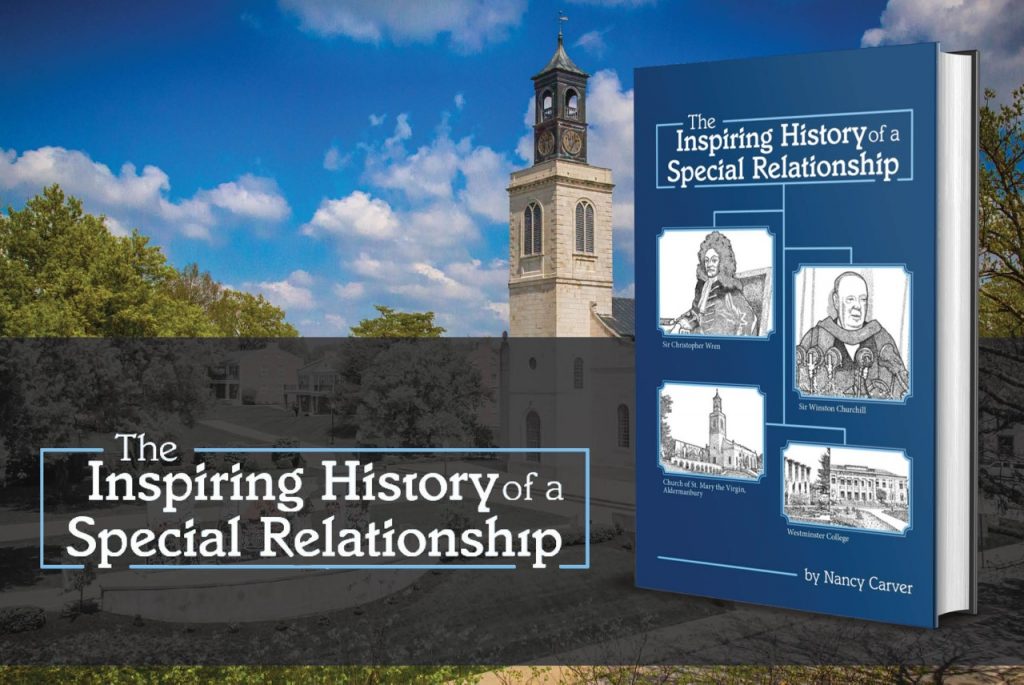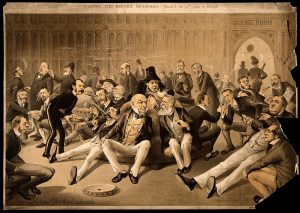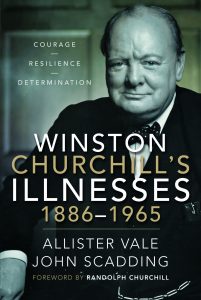Bulletin #152 — Feb 2021
In Churchill’s Footsteps

February 1, 2021
Nancy Carver, The Inspiring History of a Special Relationship, Foreward by Donald P. Lofe, Jr., America’s National Churchill Museum/Westminster College, 2020, 338 pages, $25. ISBN 978–0578761718
Review by TIMOTHY RILEY
Seventy-five years ago, during Winston Churchill’s appearance at Westminster College in Fulton, Missouri, the term “iron curtain” was instantly elevated within the geopolitical lexicon. Today, the potent metaphor appears in any discussion of the Cold War. Another phrase, “special relationship,” is equally well known but less often associated with Churchill’s “Sinews of Peace” address—commonly called the “Iron Curtain” speech—delivered on March 5, 1946 at Fulton.
In the newly published The Inspiring History of a Special Relationship, author and historian Nancy Carver, a Churchill Fellow at Westminster College, examines the special relationship not only with a thoughtful and new analysis of Churchill’s famous speech, which is printed in full in this volume, but also explores the roots of the historical bond between Britain and America. Carver skillfully weaves together Churchill’s speech and centuries of Anglo-American history. From the Magna Carta to the American Civil War, the author channels Churchill’s A History of the English-Speaking Peoples to inform her highly engaging narrative. The threads combine to tell the story of Westminster College’s audacious act of moving the ruined Christopher Wren Church of St. Mary the Virgin, Aldermanbury from central London to Mid-Missouri as a memorial to the speech and the statesman who delivered it.
Through the prism of numerous American and British press accounts, the author reminds us the immediate reaction to Churchill’s “Sinews of Peace” was mixed. Churchill was both panned and praised with the Atlanta Constitution declaring simply “it was not a sound speech,” while the Daily Mail in London noting “Russia’s disastrous course can and must be arrested. Who can doubt that the way to do it is the one proposed by Mr. Churchill.” The author cleverly compares historic accounts from 75 years ago with 21st-century press coverage about the speech, museum, and historic site at Westminster College. Throughout the book, Carver reveals when and why other luminaries—Averell Harriman, Lord Mountbatten, Ronald Reagan, Mikhail Gorbachev, Margaret Thatcher, and countless others—followed Churchill’s footsteps to Fulton. In doing so, she makes an excellent case for the continuing and relevance of history and historical sites like America’s National Churchill Museum.
To underscore this point, the author contends the Wren Church of St. Mary the Virgin, Aldermanbury is a powerful physical manifestation of the special relationship. Built by the British, destroyed twice by fire (the second time by the Germans during the Blitz), and rebuilt by Westminster College in America’s heartland, Carver’s illustrated account of the church’s relocation to Fulton is one of the finest written.
At a time when there is renewed speculation about the vitality of the special relationship between the United States and the United Kingdom, this book is a refreshing reminder that the common bond between the two nations is based on the fundamental shared belief in democratic values—the “title deeds of freedom” as Churchill called them, that have endured for centuries. One would think Winston Churchill would approve.
Timothy S. Riley is Sandra L and Monroe E. Trout Director and Chief Curator of America’s National Churchill Museum. The museum will commemorate the 75th anniversary of the “Iron Curtain” speech via the internet on March 5–6, 2021. For more information, please visit the ANCM website.
Subscribe
WANT MORE?
Get the Churchill Bulletin delivered to your inbox once a month.






